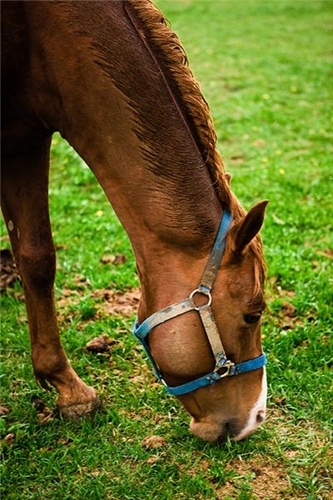Imagine taking a horse for a ride, only to find something is wrong. The horse’s pellets are virtually untouched, and when you try to feed it a handful, it appears to be unable to swallow them. It is drooling and sweating, and its muscles are quivering. You suddenly notice that the horse has lost a dramatic amount of weight, and looks frail and emaciated.
Your horse may be one of the unlucky number in the U.S. that is afflicted with equine grass sickness (EGS), an acute and often fatal disease that causes severe damage to a horse’s central and peripheral nervous system. Long a mystery to scientists and horse owners alike, the illness may be easier to understand, thanks to a recent study. The results will be of interest to anyone passionate about equine health.
EGS and Alzheimer’s like two peas in a pod
The study, carried out by researchers at the University of Edinburgh’s Roslin Institute and Royal (Dick) School of Veterinary Studies, found that there are significant parallels between the illness and other, human-afflicting diseases like Alzheimer’s, Parkinson’s and Huntington’s.
“The study’s findings could lead to a test to diagnose EGS.”
The study is the first of its kind to relate human conditions to illnesses in animals, specifically illnesses relating to degenerative molecular and neurological conditions.
The researchers discovered this by examining the proteins contained in tissue taken from animals suffering from the disease. Those found, such as a concentration of amyloid protein, are also often seen in the brains of people with Alzheimer’s.
Moreover, in what will be heartening news for anyone interested in horse care, the research has helped find more than 500 protein alterations in horses suffering from EGS that had not previously been linked to the disease. According to a press release from the University of Edinburgh, this could help lead to the development of a test for the disease, which is often difficult to diagnose.
As an added bonus, it may also yield knowledge about the human-borne diseases like Alzheimer’s that have long confounded scientists.
The mystery of EGS
EGS is an unpleasant disease that often strikes in horses ages 2 to 7. According to the Equine Grass Sickness Fund, it was first spotted among horses in Scotland at the turn of the 20th century. Since then, while attempts have been made to avoid the disease by changing agricultural practices, and researchers have tried to study its causes, it remains a killer, as well as a mystery.
According to the U.K.’s Equine Grass Sickness Surveillance Scheme, EGS has a mortality rate of over 85 percent, essentially serving as a death sentence for horses. Horses may die as early as within the first 24 hours to as late as the next week.
While the disease is not nearly as common in the U.S. as it is across the Atlantic, according to the Merck Veterinary Manual, it can still be found here, predominantly in the Midwest. The disease is similar to sicknesses found in other grass-fed animals like cats, dogs and rabbits, leading many to believe it is caused by grass contaminated with some foreign agent.
The results of this study could be key, as it’s generally acknowledged that the earlier the sick horse’s EGS is diagnosed, the greater chance it has to survive. As an EGS Fact Sheet produced by the University of Edinburgh points out, there currently exists no non-invasive test for diagnosing EGS, which is often difficult to distinguish from other sicknesses that have similar symptoms. This study could be the first step to developing just such a test, which means if your horse is one of the unlucky few to be diagnosed, it could be back to full fitness and ready for horse riding in no time.
iframe{ width: 99%!important;}
A pony who survived acute equine grass sickness has completed a 300-mile trek across Scotland http://t.co/RcAwUQtmBv pic.twitter.com/lx1htT8eqJ
— Horse & Hound (@horseandhound) July 2, 2015








